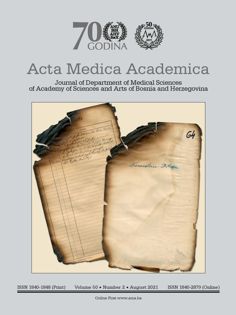Clinical Manifestations and Medical Imaging of Osteogenesis Imperfecta: Fetal Through Adulthood
DOI:
https://doi.org/10.5644/ama2006-124.343Keywords:
Osteogenesis Imperfecta, Magnetic Resonance Imaging, UltrasoundAbstract
The aim of this paper is to describe the varying clinical and imaging manifestations of Osteogenesis Imperfecta (OI) in the fetus, the child, and the adult. OI is a genetic disorder with mutation of Type 1 and non-type 1 collagen genes that results in disruption of multiple collagen based organ systems, most notably bones, often leading to “brittle bones”. Additional features such as blue sclera, dentinogenesis imperfecta, joint and ligamentous hyperlaxity, hearing loss and cardiac defects may be present. Currently, there are at least 30 recognized genetic forms of OI. Given the multiple genes involved, variable genetic inheritance, and the wide range in phenotype, diagnosis can be challenging. While OI may sometimes be diagnosed in the fetus, patients with mild forms of OI may be diagnosed in childhood or even in adulthood. Imaging, including ultrasound, radiography, computed tomography, and magnetic resonance imaging, plays an important role in the diagnoses of OI in the fetus, the child, and the adult. Imaging is also crucial in identifying the many multisystem manifestations of OI. In particular, imaging can help differentiate manifestations of OI from injuries sustained in non-accidental trauma. Age, severity and manner of presentation of OI vary broadly depending on the specific genetic mutation involved, mode of inheritance, and age of the patient. Successful diagnosis of OI hinges on a detailed knowledge of the variable presentation and complications that may be encountered with this disease. Conclusion. In conclusion, OI comprises a heterogeneous group of genetic disorders responsible for bone fragility and additional connective tissue disorders, which can result in specific clinical and imaging findings in the fetus, the child, and the adult.
Downloads
Published
Issue
Section
License
Copyright (c) 2021 Jennifer S. Weaver, Jonathan W. Revels, Jamie M. Elifritz, Benjamin Whitlow, Michele Retrouvey, Sherry S. Wang

This work is licensed under a Creative Commons Attribution-NonCommercial 4.0 International License.





